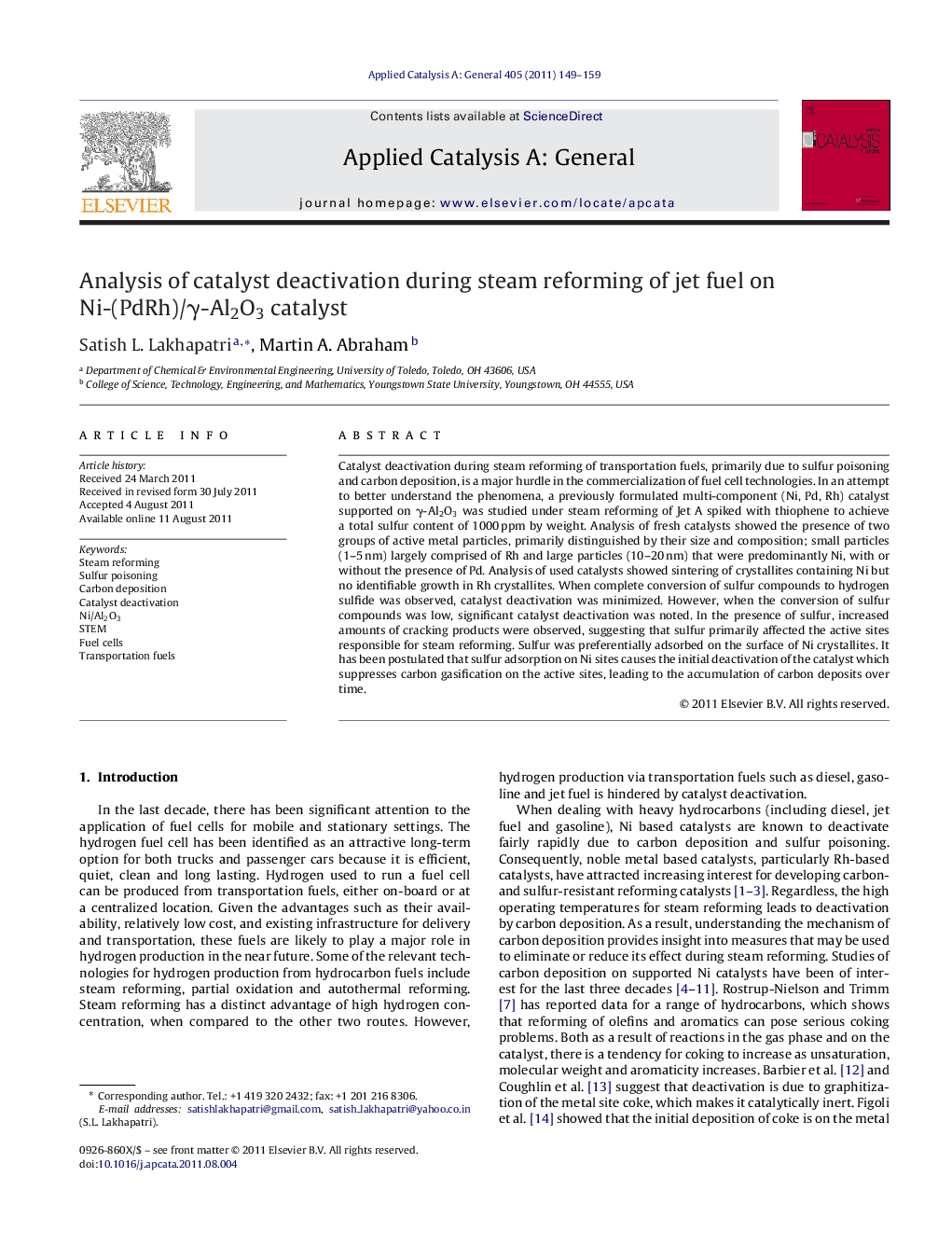| کد مقاله | کد نشریه | سال انتشار | مقاله انگلیسی | نسخه تمام متن |
|---|---|---|---|---|
| 41370 | 45886 | 2011 | 11 صفحه PDF | دانلود رایگان |

Catalyst deactivation during steam reforming of transportation fuels, primarily due to sulfur poisoning and carbon deposition, is a major hurdle in the commercialization of fuel cell technologies. In an attempt to better understand the phenomena, a previously formulated multi-component (Ni, Pd, Rh) catalyst supported on γ-Al2O3 was studied under steam reforming of Jet A spiked with thiophene to achieve a total sulfur content of 1000 ppm by weight. Analysis of fresh catalysts showed the presence of two groups of active metal particles, primarily distinguished by their size and composition; small particles (1–5 nm) largely comprised of Rh and large particles (10–20 nm) that were predominantly Ni, with or without the presence of Pd. Analysis of used catalysts showed sintering of crystallites containing Ni but no identifiable growth in Rh crystallites. When complete conversion of sulfur compounds to hydrogen sulfide was observed, catalyst deactivation was minimized. However, when the conversion of sulfur compounds was low, significant catalyst deactivation was noted. In the presence of sulfur, increased amounts of cracking products were observed, suggesting that sulfur primarily affected the active sites responsible for steam reforming. Sulfur was preferentially adsorbed on the surface of Ni crystallites. It has been postulated that sulfur adsorption on Ni sites causes the initial deactivation of the catalyst which suppresses carbon gasification on the active sites, leading to the accumulation of carbon deposits over time.
Figure optionsDownload high-quality image (179 K)Download as PowerPoint slideHighlights
► Mechanism of catalyst deactivation during steam reforming of Jet A was investigated.
► Decline in H2 yield with time coincided with reduced conversion of thiophene to H2S.
► Sulfur was preferentially adsorbed onto Ni, while no detectable sulfur was seen on Rh.
► Only surface adsorption of sulfur was seen and no bulk sulfur was detected.
► Polymeric/aromatic type carbon was deposited on the catalyst surface.
Journal: Applied Catalysis A: General - Volume 405, Issues 1–2, 3 October 2011, Pages 149–159